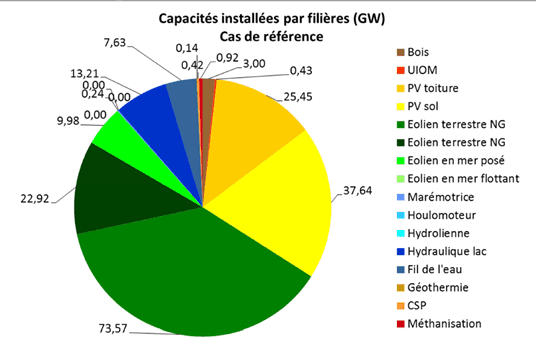
A new French government study shows that the cost to the French consumer of a 100% renewable scenario is more or less equal to a scenario close to today’s, with only 40% renewables. It is yet another instance of leading energy experts asserting that a 100% renewable future is possible, writes Terje Osmundsen, Senior Vice-President of Norwegian independent solar power producer Scatec Solar.
Something remarkable is taking place that is bound to lead to a deep reshaping of the energy debate, starting in Europe and North America. It used to be the visionaries and the NGOs who talked about a 100% renewable future, but now leading number-crunchers and energy experts are joining the chorus. In California, the government energy regulator were recently quoted saying that California’s power grid could handle 100% renewables.
The city of Vancouver is an example of a big city that recently committed to run 100% on renewables for power, heating and transportation within 20 years. New studies have been released showing the US can get to 100% renewables by 2050, at marginal extra cost.
France: 100% renewable?
«Vers un mix électrique 100% renouvable en 2050″ is the name of the brand new report from ADEME (French Agency for Environment and Energy Management), the government agency responsible for green and renewable energy in France. The publication of the report was considered controversial by the French government currently busy securing a majority in the Senate for the new energy transiton law that recommends an electricity mix with 50 % nuclear, down from 75% today.
A political decision was therefore made to postpone the publication of the study, but after the media house Mediapart got hold of it, it has now been published by ADEME.
The 120-page report (exluding attachments) provides a number of interesting and surprising insights. First of all, the study demonstrates that a 100% renewable power system in France is both possible and economically attractive, also when taking into account a number of alternative scenarios including extreme weather, stricter regulations against wind, solar and high-voltage connections, slower technology development, and the like..
Secondly: The cost to the consumer of the 100% renewable scenario is more or less equal to a scenario close to today’s, with only 40% renewables. The reason is simple: Whereas the cost of wind and solar continue to fall, the cost of natural gas including CO2 will rise steadily. But also nuclear is becoming more expensive, primarily due to the new safety regulations.

The study describes a new generation of wind technology that it believes will lead to fewer conflicts with local communities, and assumes that people will accept the high number of new transmission links foreseen in the reference «High-Wind» scenario. For the same «rational» economic reasons, it does not expect rooftop PV to reach more than 10% of total generation by 2050.

In my view, the study underestimates the potential disruptive power of solar PV compared to alternative sources of renewable and non-renewable energy. The Levelised Cost of Electricity (LCOE) for respectively ground-mounted and rooftop PV will fall gradually and reach 6 and 8.5 €/MWh in 2050, the authors say. This makes ground-mounted PV cheaper than onshore wind in 2050, and the cost of rooftop PV roughly the same as wind power from fixed offshore farms. One big difference however, is that small and medium-sized PV are close to the load centers and hence cheaper to bring to the end-customer.
Furthermore, it should be noted that the assumptions regarding the cost of PV cited above are conservative; most industry experts would expect significantly lower costs in 2050. In addition, rooftop PV and most ground-mounted PV installations are easy and relatively quick to develop and install.
The outcome of all this would therefore most likely be that PV and wind would reach about equal share of the electrity mix in 2050, i.e. 35-40% for each, bringing the total installed capacity of PV to the range of 80-90 GW. Not a bad performance for a country that so far has installed only about 4 GW.
With wind and PV growing to 80% of total power production in 2050, the study gives a lot of attention to how – and at what cost – the different regions can fill the gap when neither the wind nor the sun can meet the demand. What comes out is a combination of demand management (electric cars, for example, charging and discharging), import/export, short term storage (batteries and compressed air installations for example) and hydropower.

But the main contribution is long-term storage, from «Power to Gas» to «Gas to Power». In other words, the «hidden potential» for storage revealed in the ADEME study is not batteries, but cheap methane produced in a process of mixing CO2 with hydrogen. The methane gas will then be stored, or be transported in the existing gas pipelines to a site for storage, and converted to peaking power during winter months. This hydrogen/methane route represents more than half of all storage solutions foreseen in the 100% renewable scenario, equal to close to 20 GW in 2050.

It’s perhaps no coinsidence the French experts are so convinced by the methanisation way to storage. After all, the Sabatier reaction involving the reaction of hydrogen with carbon dioxide to produce methane and water was first discovered in France 100 years ago. The inventor was the French chemist Paul Sabatier.
Source: Energy Post. Reproduced with permission.







